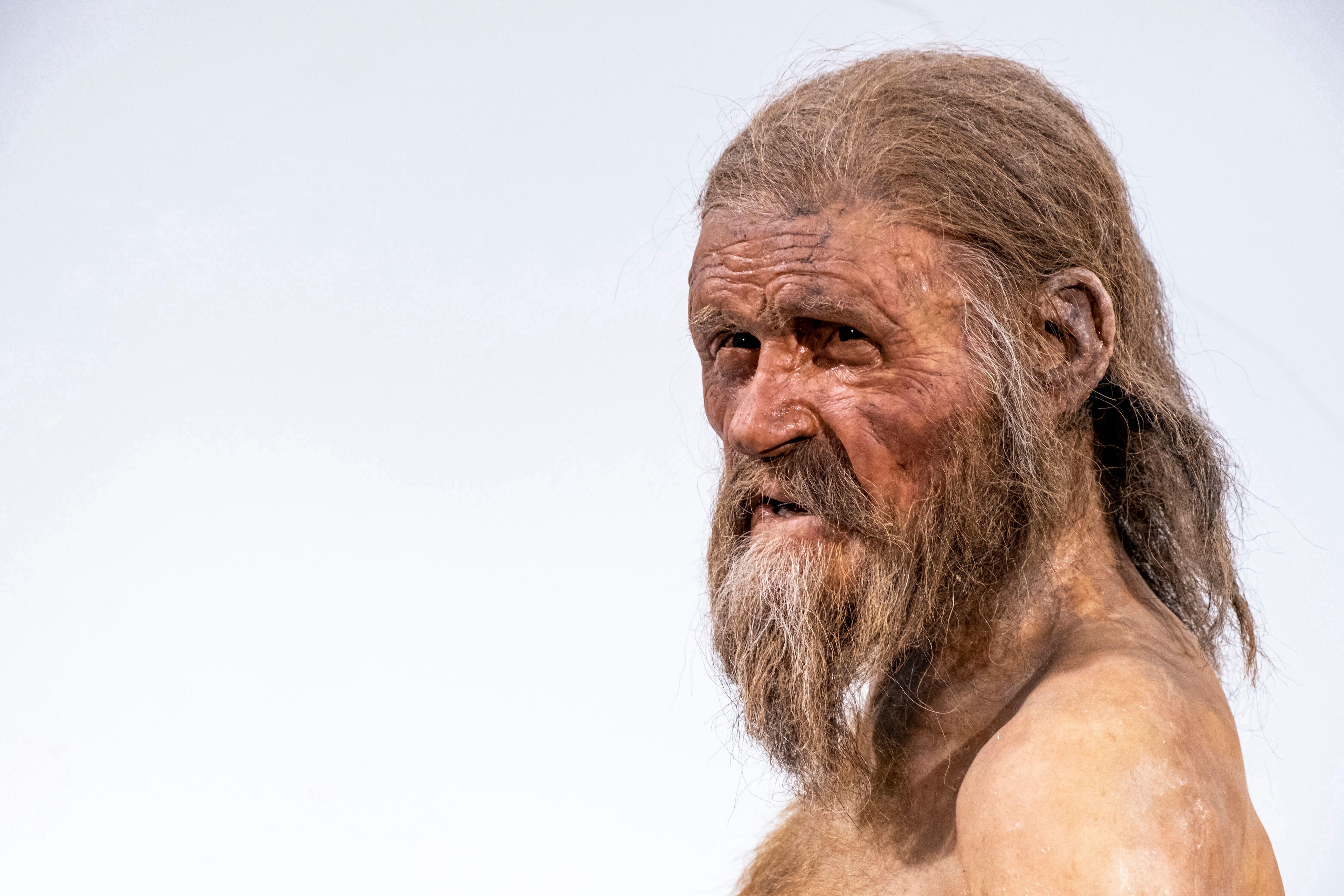
Europe’s oldest mummy has had a makeover.
In 1991, hikers in an Italian valley near the border with Austria stumbled on a frozen corpse. The remains belonged to a man who had died around 5,300 years earlier, after being shot by an arrow. Nicknamed Ötzi, after the valley where he was found, the iceman became a sensation — capturing the imagination of people around the world and giving scientists unprecedented insight into ancient Europeans.
Ötzi has conventionally been depicted with long, unkempt hair and pale skin. These interpretations arose in part from genetic sequencing of the mummy back in 2012. But a high-quality redo of Ötzi’s genome suggests that the iceman probably had very little hair on his head and had much darker skin than previously thought, concludes a study published on 16 August in Cell Genomics.
The discovery makes sense, considering the mummy’s dark colouration and lack of hair, says co-author Albert Zink, a mummy researcher at Eurac Research in Bolzano, Italy.
“I was surprised,” he says. But “when I thought about it, it explains much better why the mummy looks like it does”.
Brown eyes, pale skin?
Ötzi’s preservation on ice presented an early opportunity to do ancient-DNA work. In 2012, researchers published a draft version of Ötzi’s genome — one of the first ancient genomes ever sequenced. The analysis suggested that Ötzi had pale skin, brown eyes (previously thought to be blue) and steppe ancestry.
This latter point was surprising because steppe ancestry — from ancient herding people hailing from eastern Europe and central Asia — is common among southern Europeans today, and research suggested that steppe people didn’t make their way into Europe for 1,000 years after Ötzi died. But researchers knew early on that Ötzi’s genome wasn’t sequenced perfectly.
Ancient-DNA technology has since improved by leaps and bounds. So, Zink and his colleagues collected shards from Ötzi’s exposed hip bone and sent it to Germany to be sequenced.
This higher-quality genome showed that Ötzi’s suspected steppe ancestry probably stemmed from modern DNA contamination. Instead, the team found an astonishing level of Anatolian-farmer ancestry. These early agriculturalists, who lived in the land sandwiched between the Mediterranean and Black seas, are thought to have migrated into Europe and mixed with local hunter-gatherers. But Ötzi didn’t carry much European hunter-gatherer DNA, hinting that his lineage was genetically isolated from other Europeans at the time.
New portrait
Skin-pigmentation markers revealed that Ötzi had much more melanin in his skin than expected, making him darker than modern Sicilians. He also carried genetic markers for male-pattern baldness. Considering his age — and the mummy’s missing hair — Zink suspects that Ötzi was balding when he died.
Previous work suggests that Anatolians were in Europe at the time that Ötzi was alive. So it’s not all that surprising that the mummy would have Anatolian ancestry, says Pontus Skoglund, an ancient-genome researcher at the Francis Crick Institute in London. But the genome is “a welcome addition to the detailed portrait that exists about his life and final hours.”
The work reveals how much remains to be learnt about this mummy, Zink says.
“I’m often asked if, after 33 years of iceman research, shouldn’t everything be known?” says Zink. “That’s not the case. I think there will always be new doors opening for research.”
This article is reproduced with permission and was first published on August 16, 2023.
